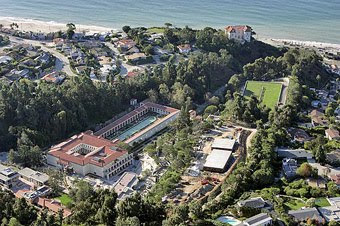
Ryan Hendon, Mid-Century Landscapes, Pictured #2, Vintage Silver Gelatin Print, 8 7/8" x 8 3/4"
September 9th marked the opening of our first-ever photography show which is curated by local photographer Stephanie Dowda. In conjunction with Atlanta Celebrates Photography, Echoes of the Sublime features 10 artists, both local and non-local. Stephanie has selected black and white, color, vintage prints and brand new works to bring us a wonderful introduction into this genre.


Be sure to get out and about during the month of October to catch all that the ACP Festival has to offer! Starting with the Auction Gala this evening at King Plow, there are too many events to name. Almost every gallery and public space in the city is participating in some capacity. There is a lecture series, film series, openings and special events. To learn more about all of the programs included, visit www.ACPinfo.org, or swing by and pick up a brochure from us.
The show features works by the following: Allyson Ross of New York, John Paul Floyd of Atlanta, Klea McKenna of San Francisco, Justin Weaver of Atlanta, Jeff Rich of Savannah, Aaron Norberg of Portland, Lauren Hughes of Atlanta, Ryan Hendon of San Francisco, Ashley Kauschinger of Atlanta and Megan Gorham of San Francisco.

Lauren Hughes, Lingered or Luck, Digital Archive Print, framed, 16" x 24"
Not only did Stephanie's curatorial work bring in our largest opening night crowd to date, but she is also receiving rave reviews. Jerry Cullum, writing for ArtsCriticATL.com, says, "...the goal of curator Stephanie Dowda in “Echoes of the Sublime,” at Emily Amy Gallery through October 22, is both ambitious and admirable. Bearing in mind what the sublime has meant in more philosophically secure eras of life and thought, she sets out to find what the sublime means for American photographers in the second decade of the 21st century." Read the review in it's entirety here: http://www.artscriticatl.com/category/art_and_architecture/. Needless to say, if you haven't seen the show, come pay us a visit.

Megan Gorham, Untitled 2008, Archival Pigment Print, framed, 20" x 24"


















